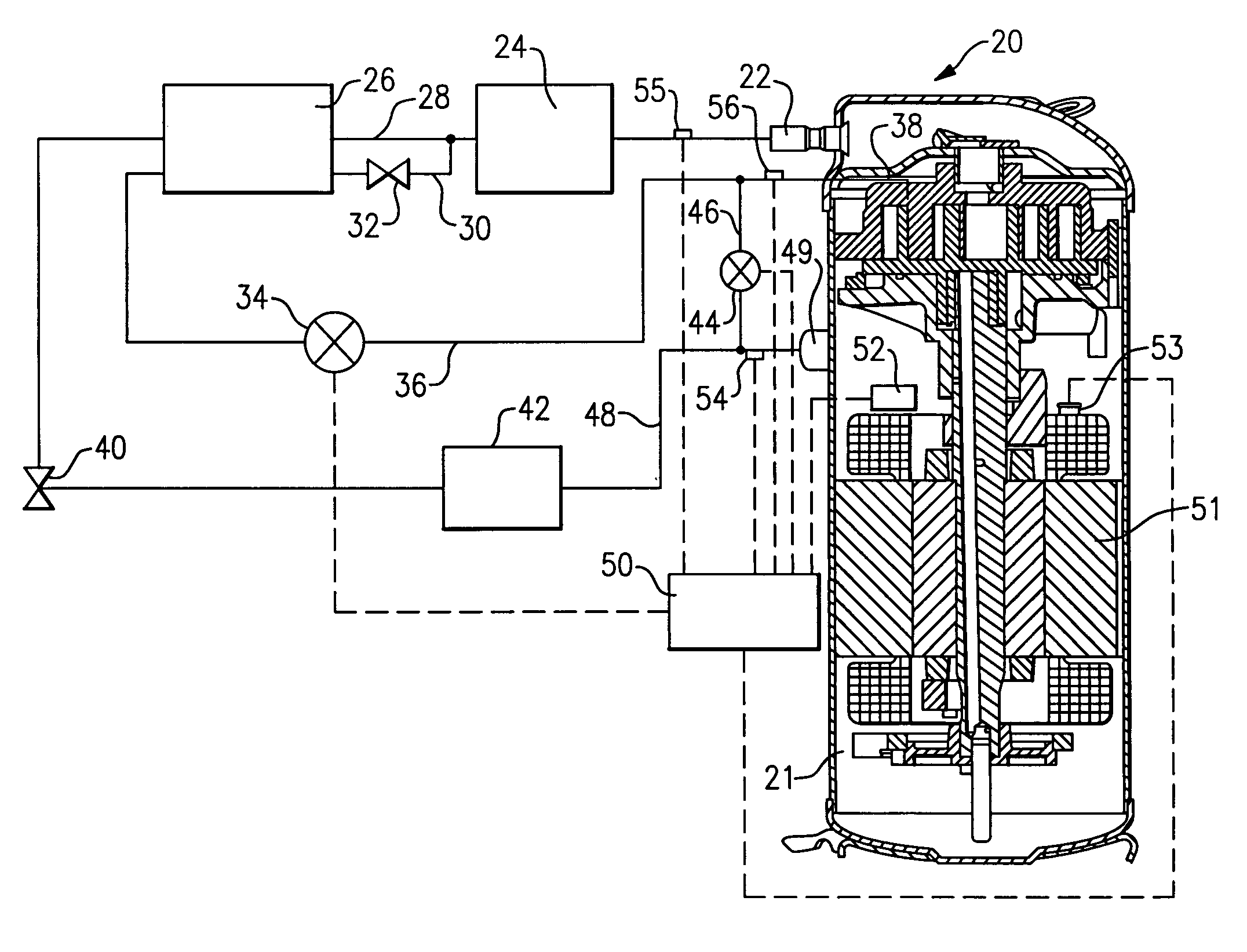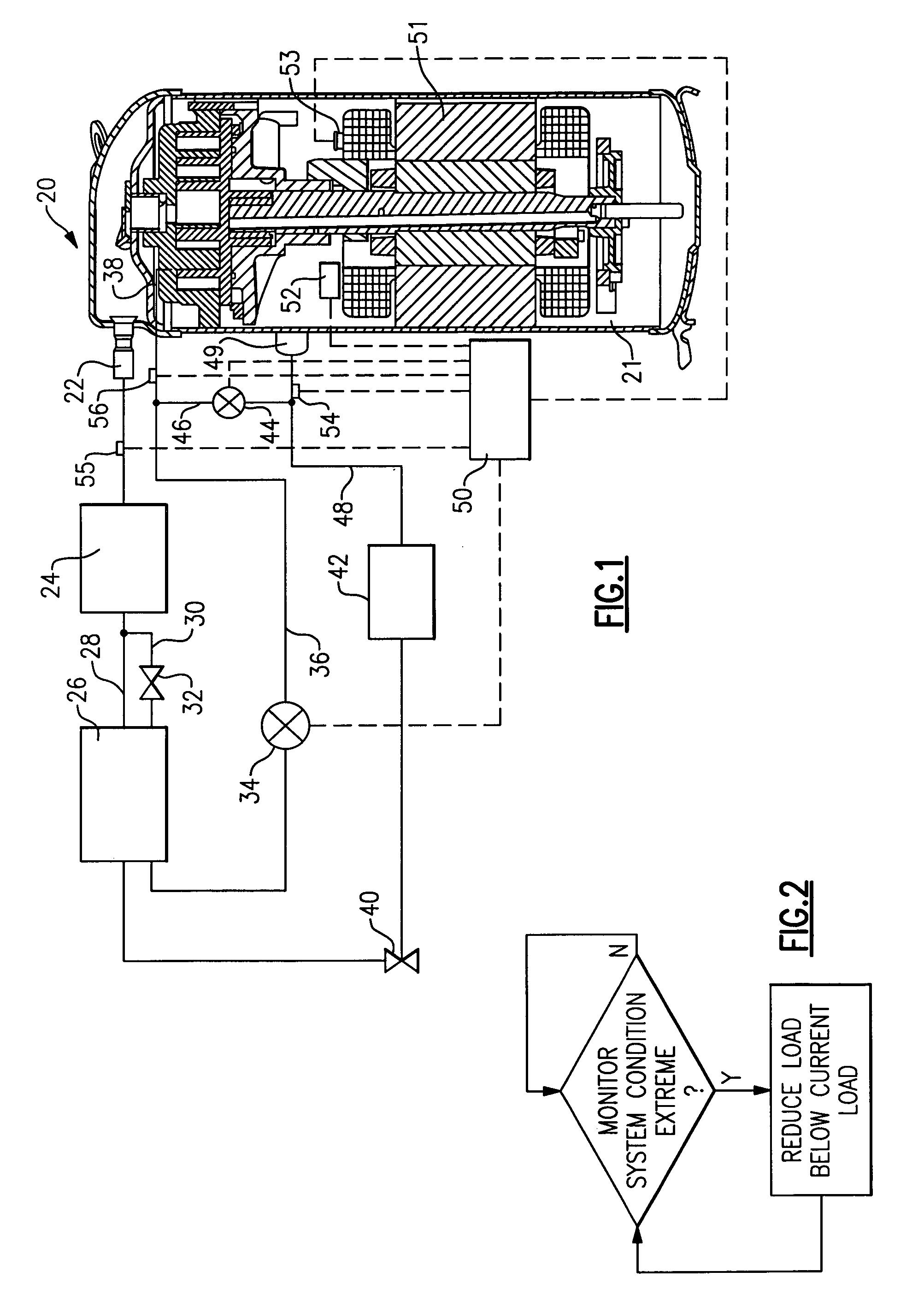Refrigerant cycle with operating range extension
a refrigerant cycle and operating range technology, which is applied in the direction of machines/engines, positive displacement liquid engines, lighting and heating apparatus, etc., can solve the problems of slowing the speed of the motor operation and the refrigerant cycle, and achieve the effect of reducing the capacity, reducing the load and thus the load
- Summary
- Abstract
- Description
- Claims
- Application Information
AI Technical Summary
Benefits of technology
Problems solved by technology
Method used
Image
Examples
Embodiment Construction
[0013]FIG. 1 shows a refrigerant cycle 20 having a compressor 21 delivering a refrigerant to an outlet port 22. From outlet port 22, the refrigerant travels to a condenser 24. As known, in condenser 24, the refrigerant exchanges heat with a source of outside air.
[0014]Downstream of condenser 24 is an economizer heat exchanger 26. A main refrigerant flow line 28 delivers refrigerant from the condenser 24 to a first branch of the economizer heat exchanger 26. A line 30 taps a portion of the refrigerant from the main refrigerant line 28 and passes this tapped refrigerant through an economizer expansion device 32. Now, the refrigerant in the tapped line 30 is cooler than the refrigerant remaining in the line 28. In the economizer heat exchanger 26, the tapped refrigerant subcools the main refrigerant in line 28. The tapped refrigerant is returned through a shut-off valve 34 in line 36, to an intermediate compression point 38 in the compressor 21.
[0015]As shown, the compressor 21 is a sc...
PUM
 Login to View More
Login to View More Abstract
Description
Claims
Application Information
 Login to View More
Login to View More - R&D
- Intellectual Property
- Life Sciences
- Materials
- Tech Scout
- Unparalleled Data Quality
- Higher Quality Content
- 60% Fewer Hallucinations
Browse by: Latest US Patents, China's latest patents, Technical Efficacy Thesaurus, Application Domain, Technology Topic, Popular Technical Reports.
© 2025 PatSnap. All rights reserved.Legal|Privacy policy|Modern Slavery Act Transparency Statement|Sitemap|About US| Contact US: help@patsnap.com


